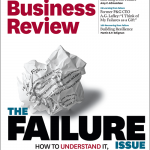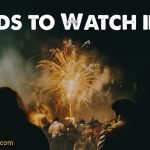
Branding is competitive. It’s about staking out the right to earn over others. But when that competitive streak becomes obsessive, brands lose objectivity and that can cost them dearly.
Ken Favaro identified the ironies in a piece on strategy’s connection to competition a couple of years ago. First, the upside of competition: the halo effect. When brands build awareness of, and then demand for, what they offer, they also build demand for those around them. Pan Am expanded its own network and in the process grew the airline business generally. Starbucks grew its presence, and in so doing, it expanded the demand for coffee. Tesla and Prius are adding to the momentum for electric vehicles. In each case, the brand has gotten bigger and so has the market, and one could argue that neither was possible without the other. That’s the value creation side of competition, says Favaro. One gains; many gain.
However, those dynamics stop working when brands become so competitive against each other that they lose sight of the customer: “when leaders think of business as a war with their competitors … they inevitably seek to beat their rivals in ways that don’t meaningfully enhance customer-perceived benefits … Such moves rarely grow the total market and almost always produce lower margins and losing products.” Price wars are a classic symptom of such rivalries. Brands literally drive their margins into the ground, and train consumers to bargain-hunt, because they commit to winning at any cost. Literally.
No brand wants to admit they are uncompetitive, or that they are at risk of being so. Maybe that’s why so few brands can look candidly at what is happening in a marketplace and draw the real lessons they need to take to improve. For some, it’s easier to call a war or to cry foul than it is to face a truth.
But the brutal reality is that if your reasons for attacking are defensive, then such calls-to-action are little more than distractions to the real issue: you are not as competitive as you once were or thought you were. Unless you act to correct that, you’re grasping at straws and your competitiveness will only continue to deteriorate. Branding is about learning and being iterative, because expectations change so fast, every innovation mainstreams quickly and markets themselves evolve continually. Brands that don’t learn or evolve continue to justify their right to exist all the way to their demise.
It’s hard not to become introspective. It’s tempting to focus on what you’re doing and to attack the other brands hard. But, if you don’t balance that, with win-win for the customer, you can rapidly come to feel that as a brand you have nothing to learn from your competitors, and that is a mistake. As Favaro points out, “Understanding competitors’ value propositions is one effective way to generate new thinking on how to improve your own value propositions.” In other words, awareness is healthy; obsessiveness is not.
It’s all very well to paint your competitors as the bad guys in your minds, but in today’s market such name-calling is immature. Instead, brands should be taking a more nuanced view of those who are not just competitors, but also colleagues, in the sector.
Four questions I’d be asking:
- What do we agree on (because it’s good for the whole market, including customers)?
- What can we grow together here (without of course being anti-competitive)?
- What can we learn together and apply together (so that we get the benefits of scale)?
- Where should customers see crucial differences between our brand and others?
The Blake Project Can Help: The Brand Positioning Workshop
Branding Strategy Insider is a service of The Blake Project: A strategic brand consultancy specializing in Brand Research, Brand Strategy, Brand Licensing and Brand Education
FREE Publications And Resources For Marketers





























